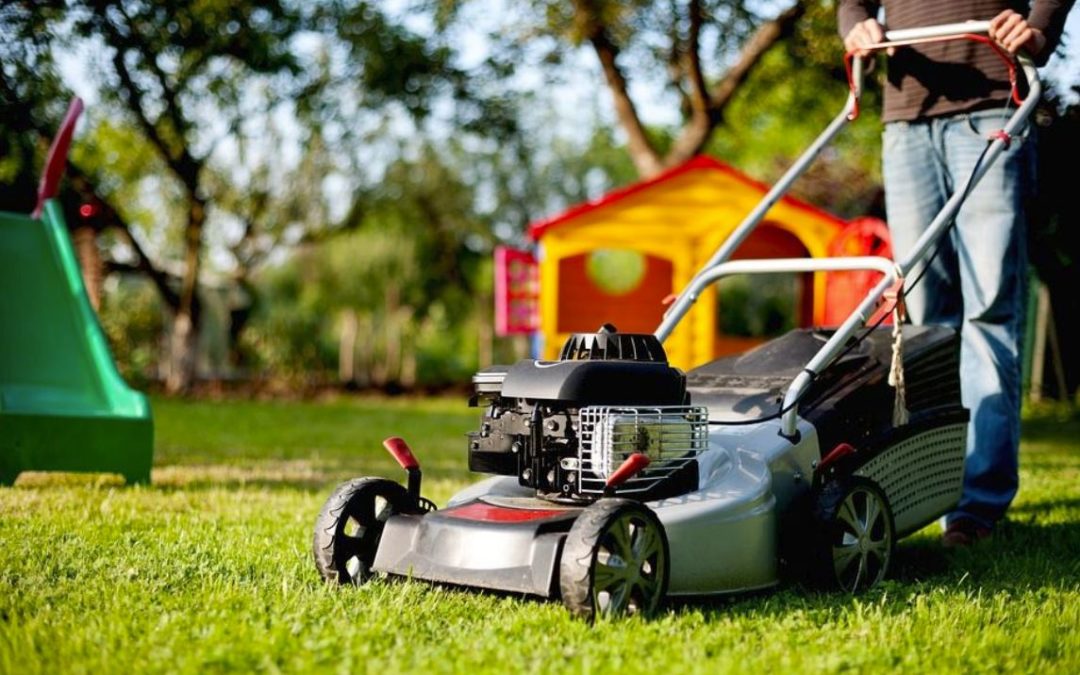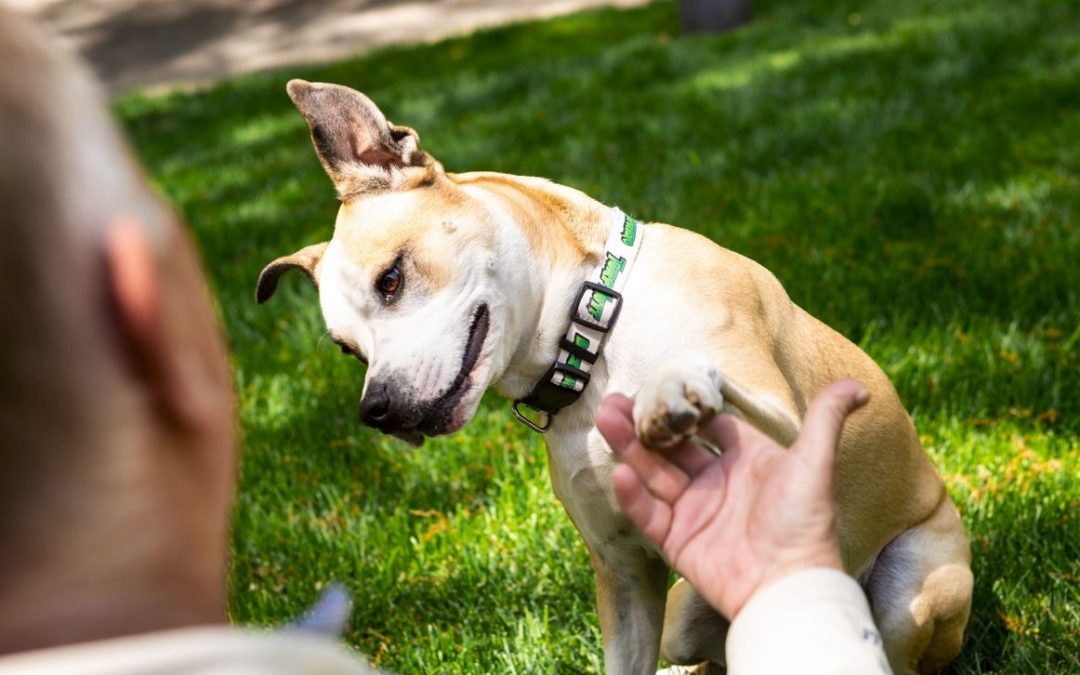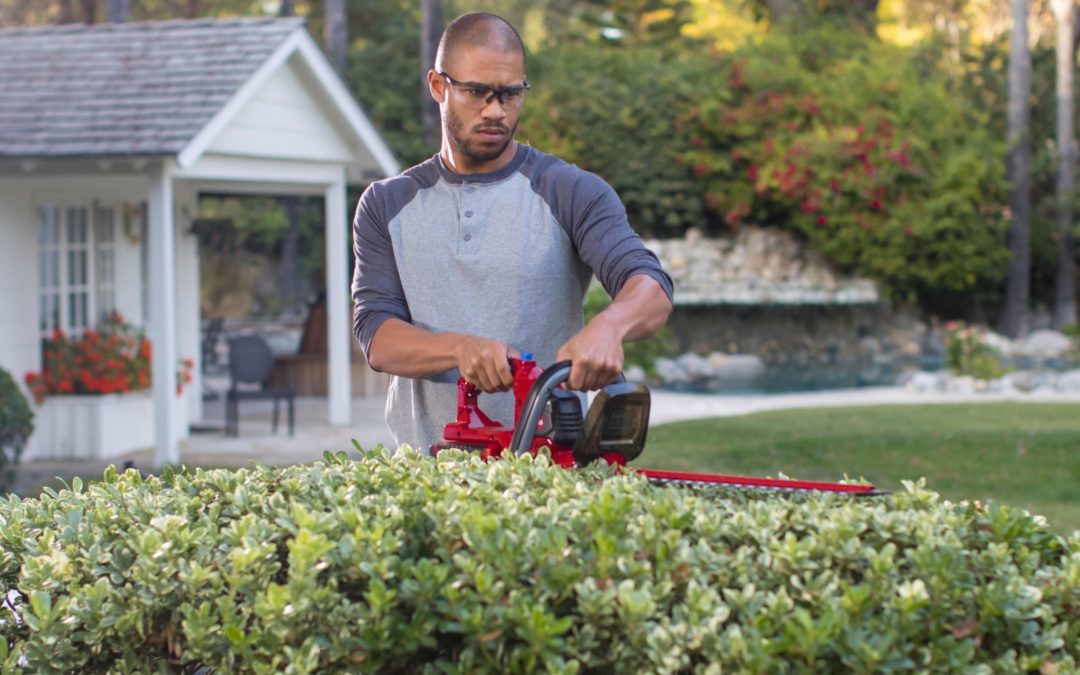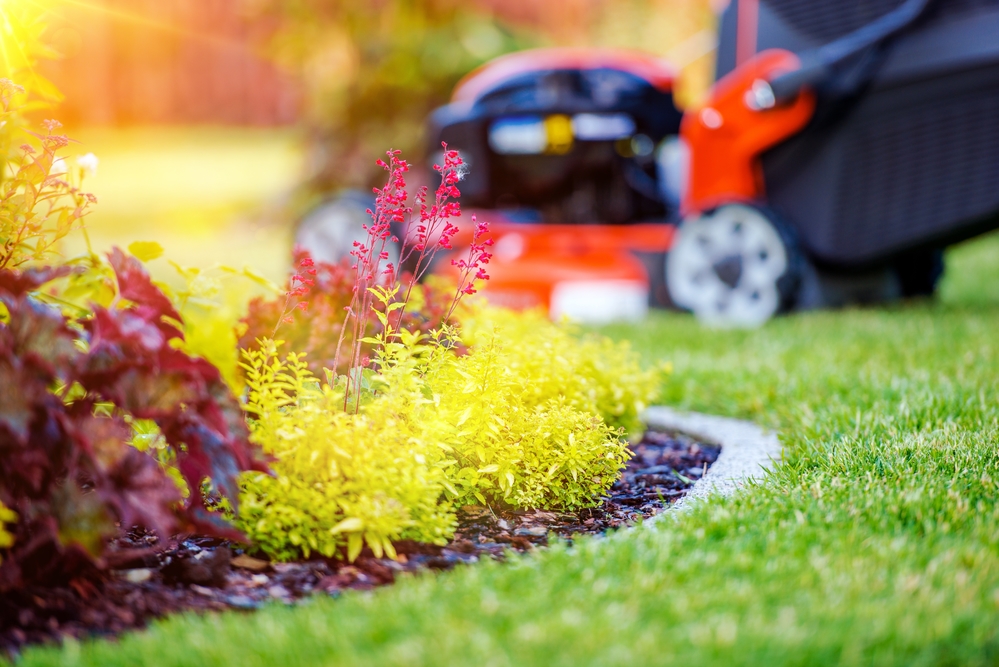
Care for Your Backyard Safely with These Lawncare Tips
It’s yard work season. It’s no surprise to Realtors® that beautiful landscaping improves curb appeal, which can increase home value by as much as 17%. Because of the pandemic, homeowner’s yards have become an even greater asset to home values as yards become a safe way to enjoy the outdoors, destress, and contribute to well-being.
The Outdoor Power Equipment Institute (OPEI) reminds homeowners to keep safety in mind when working in their outdoor living spaces this summer.
“Before you use a mower, trimmer, blower, power washer, chainsaw, pruner, portable generator, or other piece of outdoor power equipment this season, it’s important to refresh yourself on handling and safety procedures,” said Kris Kiser, President and CEO of OPEI. “You should take the time to do basic maintenance to ensure your equipment operates safely for the season and is ready to get the job done.”
Here are tips to help:
- Read your owner’s manual. Follow all guidelines for your outdoor power equipment and familiarize yourself with the controls. If you have lost your manual, look it up online (and save a copy on your computer for future reference).
- Inspect equipment. Check the air filter, oil level and the gasoline tank. Also check loose belts and missing or damaged parts. Replace any parts if needed.
- If you have gasoline-powered equipment and didn’t empty the tank before winter storage, drain the fuel now. You should never leave fuel sitting in the gas tank of your equipment for more than 30 days. Untreated gasoline (without a fuel stabilizer) left in the system will deteriorate, which may cause starting or running problems or damage the fuel system.
- Protect your power by only using E10 or less fuel in gasoline-powered outdoor power equipment. With today’s higher ethanol content fuels, most manufacturers are recommending a fuel stabilizer be used, especially if you don’t use up all the gas purchased right away. Some gas stations may offer 15 percent ethanol (E15) gas or higher ethanol fuel blends, but any fuel containing more than 10 percent ethanol can damage – and is illegal to use in – small engine equipment not designed for it.
- Store fuel safely. Label your fuel can with the date of purchase and ethanol content of the fuel. Never put “old” gas in your outdoor power equipment. If you don’t know the date of purchase, dispose safely of the fuel in the can and buy fresh fuel. Always store fuel out of the reach of children or pets and in approved containers.
- For battery-powered equipment, recharge only with the charger specified by the manufacturer. A charger that is suitable for one type of battery pack may create a risk of fire when used with another battery pack. Follow all charging instructions and do not charge the battery pack or tool outside the temperature range specified in the instructions.
- Store batteries safely. When the battery pack is not in use, keep it away from other metal objects, like paper clips, coins, keys, nails, screws or other small metal objects, that can make a connection from one terminal to another. Shorting the battery terminals together may cause burns or a fire.
- Clean your equipment and store it in a dry place. Remove any dirt, oil or grass. Clean equipment will run more efficiently and last longer. Never store your equipment in a place that is damp or wet.
To learn more, go to www.opei.org. For further information on safe fueling, go to www.LookBeforeYouPump.com.

Backyarding With a Purpose: Know Your Personality Type
Backyarding – the trend to use the backyard for everything from tele-working and working out to relaxing and recreating – has a different purpose for each of us. Identifying your backyard’s role in your family’s health and happiness is the key to cultivating a purposeful outdoor space that is customized to your needs.
“How do you a create a more purposeful outdoor space? First, you need to identify what type of ‘backyarder’ you are,” explains Kris Kiser, President & CEO of the Outdoor Power Equipment Institute (OPEI) and the TurfMutt Foundation. “Then, you can get to work in your yard with that idea in mind.”
Here are just a few of the backyarding personality types. Which one(s) are you?
- Landscaper
Your yard makes neighbors green with envy. You know how to maintain a healthy living landscape all year long, and you have the latest outdoor power equipment to make even big jobs easier. You put the right plant in the right place, so your green space is always thriving. - Outdoor Athlete
Forget basement workouts – you have an outdoor gym and exercise space that makes the neighborhood running club want to pit stop at your house. Your yard is the ideal place to stay active and inspire others to work out, too. - Work From Home Pro
Your work from home means nature is your background, and there’s no lag on the living landscape. The birds, squirrels and, yes, the dog your co-workers see on conference calls are all real. All you need is strong wi-fi, your nicest sweatpants, and a jacket for chilly morning meetings, and you’re ready for work. - Nature Lover
You know that nature starts at your own backdoor, and understand pollinator support and plant choice. You prefer to spend your free time in the urban habitat of your living landscape, watching the birds, bats, butterflies and other wildlife that count on your yard for food and shelter. - Kid Zone Creator
You know the safest place for young kids is in your own backyard, and you work hard to create an outdoor fun zone they will never want to leave. A flat area of sturdy turfgrass to play sports and pitch a tent? Check. Treehouse? Check. Zipline strung safely between backyard trees? Check. An elevated garden where they can help grow family meals? Check. Natural playscapes, like a patch of sand bordered by rocks and log stump seating? Check. “Fun” is your middle name, and you are winning at this game. - Pet Pamperer
Your focus is on Fido – no one knows your yard better – and you take cues from your four-legged friends about how to purpose your backyard. You’ve planted appropriate turfgrass that can stand up to pet play, and you’ve used soft foliage to create a natural barricade between “off limits” areas and the rest of the lawn. Trees and shrubs are strategically planted for shade, and you’ve even set up a shallow water feature to help your pup cool off on hot days. Planting with purpose for you means keeping toxic plants out of the picture. (For a complete list, visit ASPCA’s list of non-toxic and toxic plants.) - Entertainer Extraordinaire
Your backyard was the neighborhood hot spot long before the pandemic made that trend posh. Family milestones, birthdays, graduations, reunions, socially distanced BBQs – your yard is *the* place to gather. Your yard is set up for success with patio furniture, fire pit, yard games, plenty of outdoor seating, string lights, and maybe even an outdoor kitchen. - Zen Master
Your yard provides you and your family a place to be still and de-stress. Whether it’s coffee in the morning or yoga in the afternoon, You know that spending time outside is good for your health and well-being, and thanks to your yard these benefits are only steps away.
To learn more about creating the yard of your dreams, visit TurfMutt.com

How to Create the Perfect Outdoor Living (and Work) Room
It’s time for pandemic-weary homeowners to ready yards and landscapes for backyarding. Yes, backyarding is a word – and one that we all need right now.
The pandemic thrust us into a new reality, and the backyard has a starring role. With a year of limitations on where we go, how we gather, and who we connect with, yards and other managed landscapes became a safe haven.
Backyarding became a way of life as lawns, gardens, patios and decks evolved into outdoor offices, classrooms, family gathering places, and the new ‘hot spots’ in our neighborhoods. So how is the backyard set up to meet all of these needs?
Create activity zones. Consider what needs to happen in the backyard and map activity areas. A shady table can double as a home office, study zone, art table, or dining spot. A hammock or outdoor sofa can suffice for napping, reading or studying. A patch of sturdy grass is perfect for sports, family games and play. A fire pit offers cozy chairs for star gazing and socializing, while a grill near a seating area promises delicious meals. A wall, fence, or pergola may hold an outdoor movie screen for nighttime viewing. An herb or vegetable garden helps kids learn about science and nutrition while reaping the satisfaction of growing food for the table.
Factor functionality with purpose. Is there a quiet spot for conference calls? Or a shady spot that minimizes glare for online video meetings? Note where electrical outlets are and if an outdoor-rated extension cord will be needed to accommodate all of the electronics that may be used outside. Check wifi coverage and cell service in the yard and determine if there is enough comfortable seating.
Spruce up existing landscaping. Assess the backyard and do some basic “clean up.” Fix bare patches in the grass. Use a leaf blower to clean out flower beds. Prune bushes and trees. Cut the grass to a healthy height. Add a fresh layer of mulch around your trees and in flower beds. Freshen up by weeding, planting flower beds, and filling pots with colorful flowers and verdant plants.
Use plants and shrubs to hide unsightly items and control noise. Trees, shrubs and bushes offer cover from neighbors, deliver shade, camouflage unsightly pool equipment and air handlers, and tamp down noise. Planters with flowers between seating and eating areas on a patio add visual interest and privacy. Shrubs and tall plants are a terrific privacy-creator (and noise canceller for those conference calls).
Put the right plant in the right place. Choosing the right plants for the climate zone and for your lifestyle will create a backyarding space that is attractive. It will also be easier to maintain, and support pollinators and wildlife. Consider watering and sunlight or shade needs for any plants added. A hardy grass variety is more likely to hold up to pets and kids. Save delicate flowering plants for patio containers, and be sure to check out the ASPCA list of toxic plants to keep pets safe.
Invite the outdoors in. Blending interior and outdoor living spaces helps the backyard feel like an extension of the home. Open blinds and curtains to the yard. Use complementary indoor and outdoor décor in similar colors, materials and styles to create a cohesive space. This enables everyone to transition seamlessly from indoor life to outdoor living.
For more information and tips about living landscapes visit www.TurfMutt.com.

New Home? Avoid These Common Mistakes in Your Yard
Millions of Americans moved during the pandemic – many to homes with bigger yards for outdoor living. The trend of spending more time in the family yard – a.k.a. “backyarding” – is good for our health and well-being, and it creates a safe place to make memories with family and friends.
The Outdoor Power Equipment Institute (OPEI) offers this yard care advice for buyers who are settling into a new home this summer.
Have the right equipment for your outdoor space. Going from an apartment to a single-family home for the first time? You might need new lawn care equipment. Make sure your lawn mower is the right size for your new yard, and upgrade if needed. If the lot at your new property is wooded, a chainsaw and/or hedge trimmer may be required. Today’s equipment is designed to suit every yard and in a variety of power sources, including battery/electric, gasoline, propane, solar and more.
Choose the right plants. Do you live in a climate with long, hot summers? Are you in an arid region or a wet one? Understanding the environment will help you select climate-appropriate plants that will thrive with minimal input. Check out the USDA Plant Hardiness Zone Map to learn which plants, grasses, shrubs and trees are most likely to succeed in your location. Remember: right plant, right place.
Consider your lifestyle needs. When selecting and placing your living landscapes, consider your lifestyle needs. Do you want to care for your lawn yourself or will you hire landscaping help? Do you have children and/or pets that need a large area of sturdy turfgrass for running and playing? Remember, plants can be used strategically to designate “activity zones” in the yard – separating a children’s play area from the dining space, for example.
Don’t forget pollinators & wildlife. Living landscapes are vital to pollinators (bees, butterflies and birds) and other backyard wildlife who rely on the plants in the backyard ecosystem for food and shelter. Planting nectar and pollen-rich flowers that are appropriate for your climate (see above) will help nourish pollinators. Also take note of migrating birds and insects – you might be in a migrating pathway. If so, choose plants and flowers that benefit them. Using a mulch mower and let grass clippings decompose on the lawn to provide nitrogen to the soil and shelter insects and worms.
Water properly. Plants will grow stronger and work harder – creating deeper, healthier roots – if they have to work to find water. Watering deeply, but less frequently, allows moisture to reach the roots of the grass and trees in your yard. Watering early in the morning reduces excess evaporation while installing soil moisture sensors and drip irrigation systems can take the guesswork out of watering.
Cut the grass to the right height. Proper mowing helps create a lower-maintenance, drought-tolerant lawn. The perfect length varies by grass type, but the general rule of thumb is to cut only the top third of the grass blades off at any given time. Taller grass blades shade the soil and keep it cooler, helping control weeds. Taller grass is also softer to walk on – important for little feet and paws.
To learn more, go to TurfMutt.com.

Spring Lawn Equipment: Get Ready for Backyarding in High Style This Year
Backyarding is the new trend that’s emerged during the pandemic. Our backyards are where we eat, work, play, relax and socialize. The green spaces around our homes have proven to be vibrant places for connection and vital to maintaining mental health.
So how do you get ready for lots of springtime backyarding? You organize your yard and ready your landscaping.
“Take some time to plan out your yard with your family. Once you know the purpose you want it to serve, it’s time to start working with it,” said Kris Kiser, President and CEO of the Outdoor Power Equipment Institute (OPEI), an international trade association representing outdoor power equipment, small engine, utility vehicle, golf car and personal transport vehicle manufacturers and suppliers.
“A well-cared for lawn and landscape provides the canvas for a year-round backyarding lifestyle. You’ll want to get out there with your outdoor power equipment, like your lawn mower and trimmers, as soon as spring arrives, and you want to do it safely,” said Kiser.
He offered the following tips to get lawn equipment ready for spring:
Refresh your knowledge. Read your equipment owner’s manuals and follow all manufacturer’s guidelines. If you find a manual online, save a digital copy for future reference.
Look over equipment. Lots can happen in a garage or storage shed over the winter. Check the air filter, oil level and gasoline tank. Watch for loose belts and missing or damaged parts. Replace any parts needed or take your equipment to a qualified service representative. Check you have the appropriate batteries.
Drain fuel tanks. If you didn’t empty the gasoline tank before storing equipment, drain it now. Fuel should never sit in outdoor power equipment for more than 30 days. Untreated gasoline (without a fuel stabilizer) will deteriorate, which may cause starting or running problems or damage the fuel system.
Protect your power. Use only E10 or less fuel in gasoline-powered outdoor power equipment. Most manufacturers recommend a fuel stabilizer be used, especially if you don’t use up all the fuel in the tank right away. Any fuel containing more than 10 percent ethanol can damage small engine equipment not designed for it.
Store fuel safely. Label fuel cans with the date of purchase and ethanol content of the fuel. If you don’t know the date of purchase, dispose safely of the fuel and buy fresh gasoline. Always store fuel out of the reach of children or pets and in approved containers.
Don’t mix up your battery packs. For battery-powered equipment, use only the charger specified by the manufacturer. A charger that is suitable for one type of battery pack may create a risk of fire when used with another. Follow all charging instructions and do not charge the battery pack or tool outside the temperature range specified in the instructions.
Stash batteries safely. When the battery pack is not in use, keep it away from other metal objects, like paper clips, coins, keys, nails, screws or other small metal objects, that can make a connection from one terminal to another. Shorting the battery terminals together may cause burns or a fire.
Tidy up. Clean equipment will run more efficiently and last longer. Clean equipment and store it in a dry place. Remove dirt, oil or grass. Never store equipment in a place that is damp or wet.
For further information on safe fueling, go to www.LookBeforeYouPump.com.
